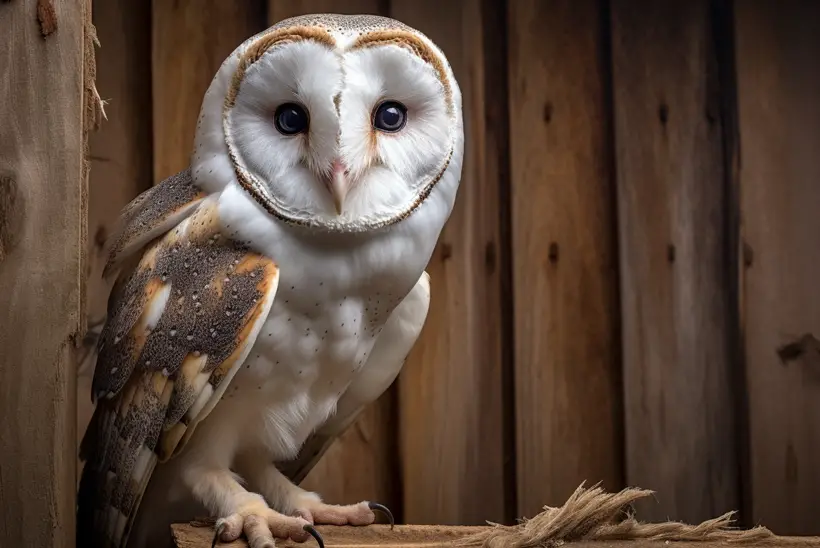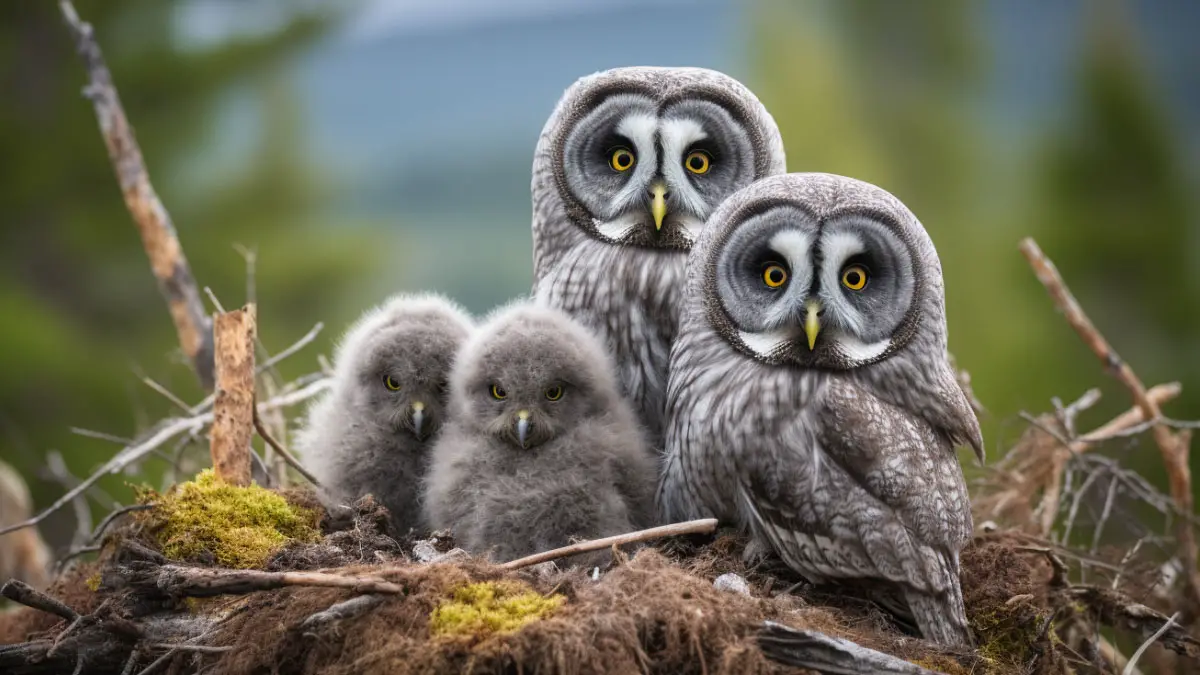Barn owls look amazing. You might have seen on TV how they hunt down their prey, how they fly, and it’s just an amazing stunt. These birds are fierce predators, and they feed on a lot of things in the animal kingdom.
So, what do Barn owls eat? Barn owls rely on meat as they are carnivores. They mostly prefer rodents. However, they also feed on reptiles, fish, amphibians, rabbits, small birds, and even small foxes. There are about 16 species of barn owls, and each has their own choices, too. We can list about 25 things that barn owls commonly feed on.
Anyway, I’ll talk about barn owls’ diet and their hunting technique to catch their prey. Go further for more details.
What Do Barn Owls Eat? List of Prey Items in a Barn Owl’s Diet

We’ve divided the list into a few categories. These are the favorite items on a Barn owl’s dinner table.
Mammals
Barn owl loves hunting down these mammals.
- Voles: Barn Owls are skilled hunters of small voles, which are commonly found in grassy fields.
- Mice: These tiny, nocturnal rodents are a primary food source for Barn Owls, especially in various habitats.
- Rats: Larger rodents like rats are a part of the Barn Owls’ diet and can be found in both urban and rural areas.
- Lemmings: Barn Owls are known to prey on lemmings. These are small subarctic rodents that experience population fluctuations.
- Rabbits: Although relatively larger, Barn Owls can catch and consume small rabbits as part of their diet.
- Shrews: Insect-eating shrews are also on the menu for Barn Owls and can be found in various ecosystems.
Reptiles and Amphibians
The following reptiles and amphibians are often hunted by Barn owls.
- Non-poisonous snakes: Barn Owls are skilled snake hunters and often target non-poisonous snakes.
- Anoles: These small, agile lizards are a favored food item for Barn Owls, especially in warmer regions.
- Geckos: Nocturnal geckos, with their insect-rich diet, are a prime target for Barn Owls.
- Skinks: Barn Owls prey on skinks. These are small to medium-sized lizards often dwelling in leaf litter.
- Toads: Amphibious toads are also on the menu for Barn Owl, known for their rough, warty skin.
- Frogs: Frogs are a common prey item for Barn Owls. While they are jumping, they get caught by such owls.
- Newts: Aquatic or semi-aquatic newts with brightly colored skin are part of the Barn Owls’ diet.
Other Small Birds

Even though owls are birds, they eat other small birds too.
- Blackbirds: Songbirds like blackbirds are among the many small birds that Barn Owls hunt. These birds are often found in agricultural and suburban areas.
- Sparrows: Small sparrows, commonly found in urban settings, are a regular food source for Barn Owls.
- Meadowlarks: Barn Owls are known to prey on meadowlarks, songbirds with melodious calls commonly found in open-field habitats.
- Starlings: Highly adaptable starlings with iridescent plumage are also hunted by Barn Owls.
Invertebrates
Among the favorite invertebrates of Barn owls, these are the common ones.
- Spiders: Barn Owls eat spiders as a secondary addition to their diet.
- Earthworms: Soil-dwelling earthworms are an occasional source of protein for Barn Owls.
- Centipedes: Predatory centipedes with venomous fangs are sometimes part of the Barn Owls’ diet.
- Snails: Slow-moving snails are a potential food item for Barn Owls and are often found in gardens and damp areas.
- Crickets: Nocturnal crickets are among the invertebrates that Barn Owls may hunt for sustenance.
- Moths: Night-flying moths are attracted to artificial lights and may become prey for Barn Owls.
- Crabs: Aquatic or semi-terrestrial crabs found in wetlands can be part of the diet of Barn Owls.
- Beetles: Diverse beetles, some of which can be pests, are on the menu for Barn Owls.
You can also take a look at the video to have a clear idea about how they eat their targets, especially the rodents.
What Do Barn Owls Eat In Captivity
If you’re petting a Barn owl for natural pest control, you might try some diet changes for the barn owl.

Foods to Offer When Feeding Pet Barn Owl
Even though mice and rodents are the ideal food for Barn owls, managing them by yourself can be a tough call. Plus, it can be rather expensive. In such cases, you can go for dead poultry chicks.
It’s essential to select prey items that are of high quality, free from diseases, and raised in clean environments. Feeding them diseased or contaminated prey can lead to health issues.

Younger owls will require smaller prey items, while adult owls can handle larger ones. Feeding prey that is too large or too small can lead to digestive problems or malnutrition.
In some cases, nutritional supplements might be necessary to ensure the owls receive all the essential vitamins and minerals they need. These supplements are typically provided by veterinarians or experienced avian specialists and should be used judiciously.
Foods to Avoid When Feeding a Pet Barn Owl
Please refrain from offering the following items to your pet barn owl:
- Food that is extremely frozen.
- Pigeons, as they often carry various avian diseases.
- Large rabbits, as they may pose a choking hazard even if chopped.
- Deceased animals and rodents should be avoided unless you are certain about the cause of their demise.

How Much Does A Barn Owl Eat Per Day
The amount of food a Barn Owl consumes per day can vary depending on factors such as its age, size, activity level, and the availability of prey in its habitat. On average, a Barn Owl may eat approximately 4 small mammals or birds per night. That’s about 3 to 6 ounces (85 to 170 grams) of food per day.
During the breeding season, when they are also feeding their young, their daily food intake may increase. A family of owls having an adult male with a female and two young owls usually eats more than 4,000 rats per year.
Where Do Barn Owls Hunt?
Barn owls usually go to places where there is abundant prey. They often go to the edges of woodlands and start to scout for food from a perch. Sometimes, they go for small mammals available in rough grasslands. Between November and March, it becomes pretty easy for Barn owls to locate vole holes.
During the summer, Barn owls choose hay and crop meadows as their hunting grounds. However, in bad weather, Barn owls often go around farm buildings for hunting.

In countries like Ireland, Barn owls are dependent more on mice than anything else. As a result, they hunt along hedgerows. In Britain, they find rough grassland to be the perfect habitat.
When and How Do Barn Owls Hunt To Eat?
When it comes to successful hunting, barn owls have one of the best adaptations so far. When they age around 8 to 14 weeks, they start learning to hunt using their own instincts.
Usually, they stay active during dusk and dawn as they leave their roost site. During this time, they try to reach their favored hunting area either for food sources or just to kill creatures as a predator.
To locate their prey, Barn owls rely mostly on their sound. They fly about 3 meters above ground, too, pretty slowly. Until they detect a small mammal, they keep flying back and forth across their habitat. And when the time is right, they will swoop to catch their prey. It’s the way they hunt for eating.

When a Barn Owl goes for its prey, it first dives headfirst, then pulls its head back and stretches out its talons to grab its target.
In winter, they spend time preying on perching places.
FAQS
Here are some frequently asked questions related to the barn owls’ diet.
They mostly prefer to hunt rodents as part of their diet. Aside from that, little animals or insects are their favorite food.
Feed small-sized meat of chicks or let them eat insects, rodents, or mammals. Minerals supplements need to be their regular part as well.
They usually feed on small prey, but I don’t think they’ll leave the large animals if they’re dead nearby.
Wrapping Up!
That clearly answers what do Barn owls eat. Such carnivores will typically rely on amphibians, reptiles, small animals, fish, or even rabbits. They basically show their hunting skill to catch such animals as part of their diet.
Sometimes, a lot of Barn owl starves for this. But these are wild Barn owls, though. If you keep them as a pet, you should try different foods and supplements by discussing them with a vet. However, whether barn owl is in the wild or as a pet, they must have enough to fulfill their dietary needs.








